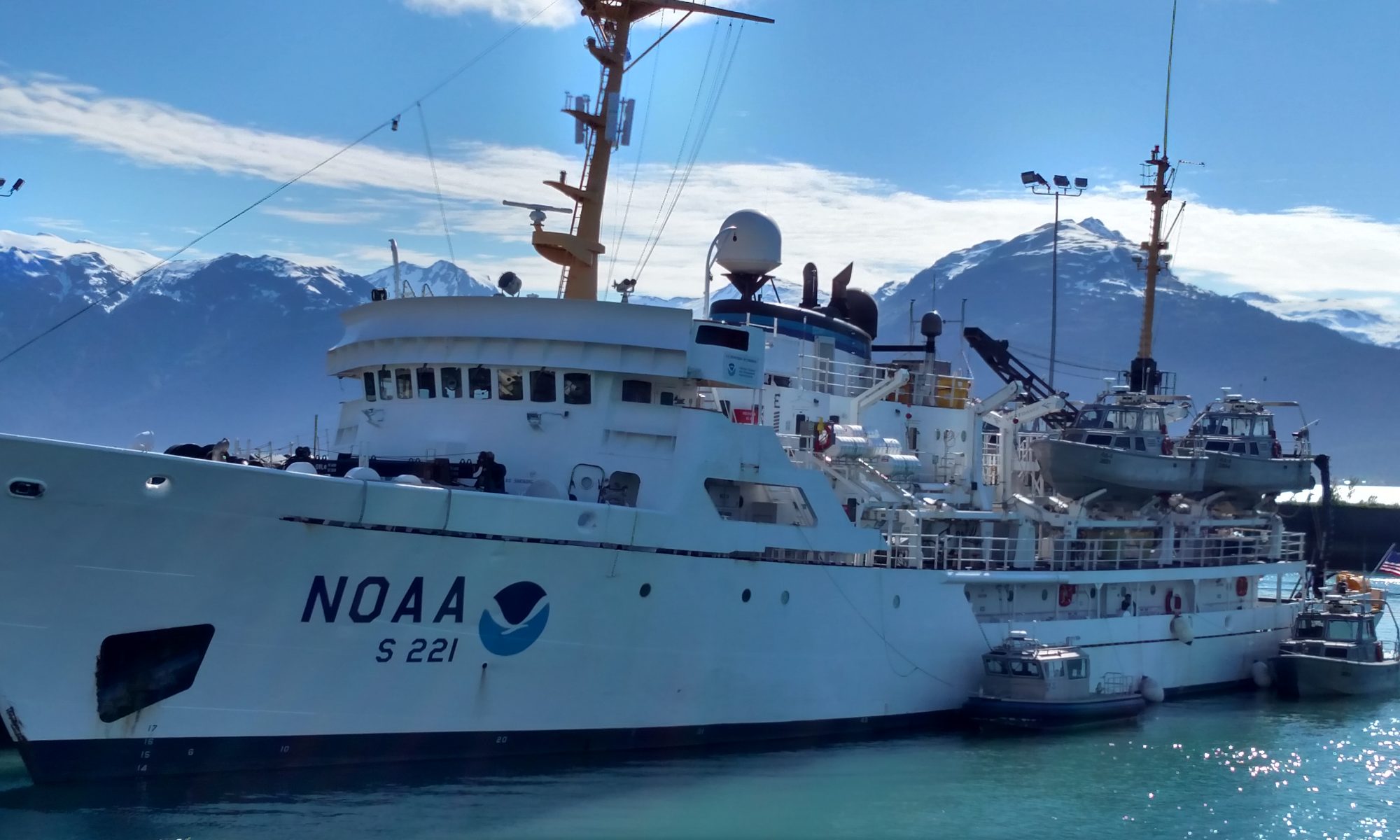NOAA Teacher at Sea
Mary Anne Pella-Donnelly
Onboard NOAA Ship David Jordan Starr
September 8-22, 2008
Mission: Leatherback Use of Temperate Habitats (LUTH) Survey
Geographical Area: Pacific Ocean –San Francisco to San Diego
Date: September 16, 2008
Weather Data from the Bridge
Latitude: 3720.718 N Longitude: 12230.301
Wind Direction: 69 (compass reading) NW
Wind Speed: 12.0 knots
Surface Temperature: 15.056

Science and Technology Log
The LUTH Survey is a collaborative effort to gather as much oceanographic data from this small part of the Pacific Ocean as possible. Although the primary objective is to characterize this area for its potential as leatherback habitat, it is also an opportunity for other scientists to gather data that reinforces their studies. Everyone on this cruise, aside from myself, is employed by the National Oceanographic and Atmospheric Administration’s National Marine Fisheries Service. The regional area that this group works in is the Southwest Fisheries Science Center. There are nine scientists who have very different specializations. The following flow chart outlines how each department is related to the others.

Every division is focused on different aspects of oceanography. Scott Benson is our chief scientist and leatherback specialist. Karin Forney is the research biologist on the team whose expertise is marine mammals and regulations out to the limit of United States waters. This limit is the EEZ – Exclusive Economic Zone – and extends for 200 miles west of the coast. Peter Dutton is currently the leader of the Marine Turtle Genetics Program, here to gain additional insight into foraging habitats of the leatherback. Liz Zele, oceanographer, and Justin Garver as oceanography intern, manage the collection and processing of oceanographic data from the CTDs and XBTs. Steven Bograd is supporting the data collection as a research oceanographer. Both George (Randy) Cutter and Juan Zwolinski collect and interpret the acoustic data. Randy’s area of expertise is with fisheries acoustics, seafloor mapping and autonomous underwater vehicles. Juan’s specialty is in acoustic estimation of small pelagic fish. Amy Hapeman is aboard as a permit analyst to gain a better understanding of how the science data are collected. Together, this dynamic group will work to put together a better picture of what habitat might be available to leatherback turtles here off the continental shelf of California. They are all excited to be here, greatly enjoy their professions, and hope to assist in leatherback turtle protection.

The night of September 13, a few members of the research team, with assistance from crewmembers, took advantage of the relatively warm water the Jordan was crossing and tried to fish for squid. Not really expecting much more than a short fight with a 12 inch mollusk, we were in for a surprise. Using a fluorescent lure, and a 50lb test, the line was dropped about 200m into the dark sea. Within 5 minutes, the line began to tug, and tug, AND TUG!! The oceanographer/fisher used a tremendous amount of strength to reel in the organism on the other end of the line. Victor, crewmember and experienced squid fisher, gaffed the squid as soon as it surfaced in the water. Shock was on every face as we acknowledged we were not expecting a 65cm long, 30-40lb animal! As soon as the tentacles that it grabbed the lure with were detached from the lure, Justin was ready to go again! And within 5 minutes another squid was caught, easily the same size as the first. This brought another three scientists and one crewmember out with additional reels.

Within an hour, eight squid were aboard, plans were made for a calamari feast and measuring began. Karin Forney, after observing the commotion, quickly retrieved an email from a colleague who is conducting research on this species of squid, and who requested that we preserve the head and internal organs for later genetic analysis. Several Ziplock bags were readied and the cleaning began. In the end there were calamari steaks for everyone and their 10 best friends, tentacles for several pots of soup and research samples collected for additional analysis. This species of squid is of concern since it had been uncommon off the central California coast until after the 1998 El Nino event, which brought warm waters up from the tropical Pacific side. Now it is much more abundant. The Humboldt squid is a voracious predator and there is great interest in understanding its potential impact on other species, especially those of commercial value.

Animals Seen Today
Blue shark Prionace glauca, Humboldt squid Dosidicus gigas, Arctic tern Sterna paradisaea, and Common redpoll Carduelis flammea.
Words of the Day
Gaff: hook attached to a long pole used to bring in a catch Characterize: to decide what the parts are that together create something Acoustic: sound wave information El Nino: a cyclic climate event originating in the tropical Pacific that is associated with unusually warm waters that impact the west coast of North and South America.

Questions of the Day
- A squid is classified as a mollusk, which is a single shelled marine animal. Where is the single shell on this animal?
- What are some of the reasons the study of leatherback turtles is so complex?








